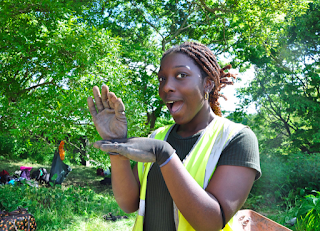What is the purpose of porpoise? New Berkeley discoveries

Last week, two of our students, Nkiruka Ogbogbo and Anneke Schadenberg, were busy sieving through spoil from Trench 8, when they happened upon not one, but two bone discs, known as epiphyses, which are believed to be from the tail of a young porpoise. These finds came from the backfill of a wall construction or robbing cut and are a first here at Berkeley – everyone on site is very excited by the find! Nkiruka with her find Anneke and her find Although porpoise is not something commonly found on menus today, various archaeological and historical records suggest that it was eaten in the past. Marine resources have long been an important part of human subsistence, with some of the earliest evidence of porpoise exploitation having been found at West Voe, a remote Mesolithic site in the Shetland Islands (Buckley et al. 2013). Evidence for porpoise exploitation has also been found in association with the Saxon period, during which the consumption of marine food became more an



